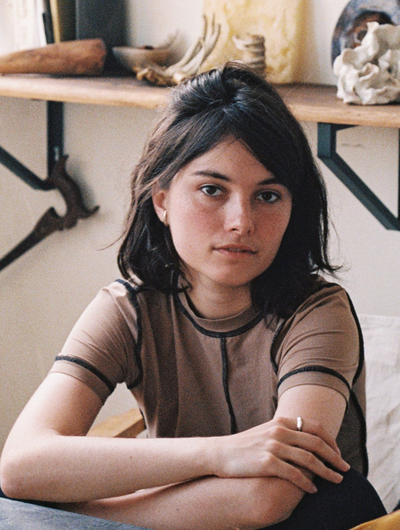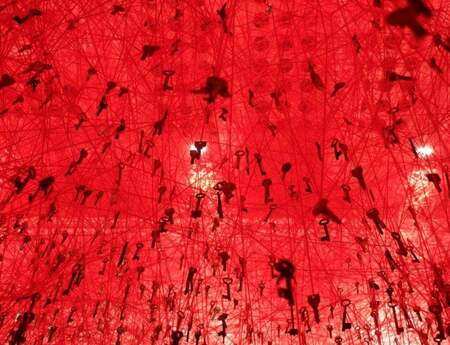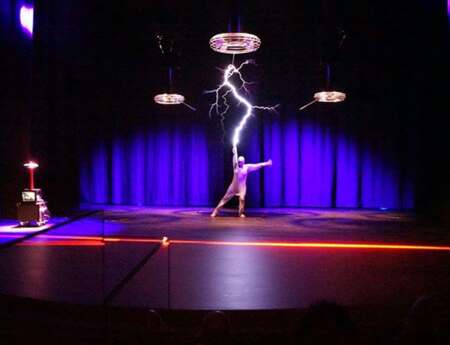About Beauty and Destruction
The works of the Dutch artist and ceramic restorer Bouke de Vries, question ideas of perfection, instead seeking beauty in fragility and destruction. He draws from his extensive experience of repairing broken, damaged items in order to create unique ‘exploded’ pieces. Through this practice of deconstruction, he says that he celebrates “traumatic damage as an integral part of the object's history,” embedding it with a whole new set of narratives and new value.
Blurring boundaries between art and craft, past and present, these ‘exploded’ works also provoke us to think about the notions of ownership and worth. I spoke to him about how he came to incorporate these ideas and techniques in his practice, the materials he works with and the influence of Japanese ceramic traditions.
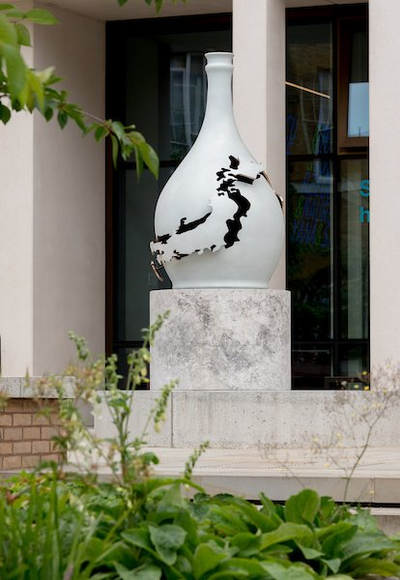
You started your creative career in fashion – after having worked with John Galliano, Stephen Jones and Zandra Rhodes you decided to take up ceramics conservation. How did you come to make such a transition? Was there continuity between the two or did you experience it as a radical change?
I really felt that a career in the fashion industry wasn’t where I saw my future and it was my partner who suggested I retrain. I always had an interest in heritage and conservation and although it was a radical change there were aspects of my training as a textile designer that were beneficial in my career as a ceramics conservator such as hand painting skills and colour matching.
The designers you worked with all share very radical and singular visions - the pieces they have created are boisterous, daring. Ceramic conservation, at least generally speaking, is about preservation rather than creation, keeping to the rules rather than breaking them; pursuing perfection rather than subversion. How did you manage to carve space for your creativity in this new practice?
When I started as a ceramics conservator I wasn’t looking for a creative outlet. I wanted to master a skill, craft, something that I could really focus on and lose myself in and try to be really good at it. It was only 15 years on that I was ready to look for the creative outlet.
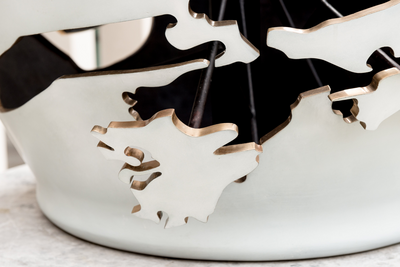
Do you think you would have ever come to make your ‘exploded sculptures’ had it not been for your experience as a ceramics conservator?
Most of the inspiration of the pieces I make wouldn’t have come about without my experience as a ceramics conservator; it is the basis of what I do - I look in the ceramics to give me ideas. Alongside that, ceramic conservation has given me a lot of skills and material knowledge that I have been able to utilise in my work.
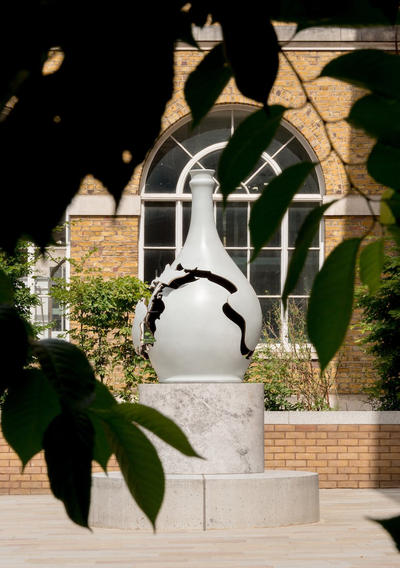
Do you see your work as a form of dialogue between the original maker (in most cases a factory worker seen more as a craftsman rather than artist during their own life) and yourself? Where does the ownership of the finished piece sit?
Everything I do comes from a love for ceramics; it’s the history and the people that made them. I respect everything that they did and by reworking damaged pieces I give them a new narrative and a new life.
You talk about ‘the beauty of destruction’, of embracing the traumatic event, finding new beauty and value in the damaged object. How much were you influenced by the Japanese art of Kintsugi?
I first learned the techniques of Kintsugi over 30 years ago when I trained as a ceramics conservator. It has always existed within my practice but it wasn’t a conscious factor when I started making my first pieces; I actually stared away from it in the beginning. My first pieces were really based on the idea of broken objects that are usually discarded. I tried to save them from obscurity. The ideas behind Kintsugi and what I do run alongside each other and cross over in what I think is a very sympathetic way.
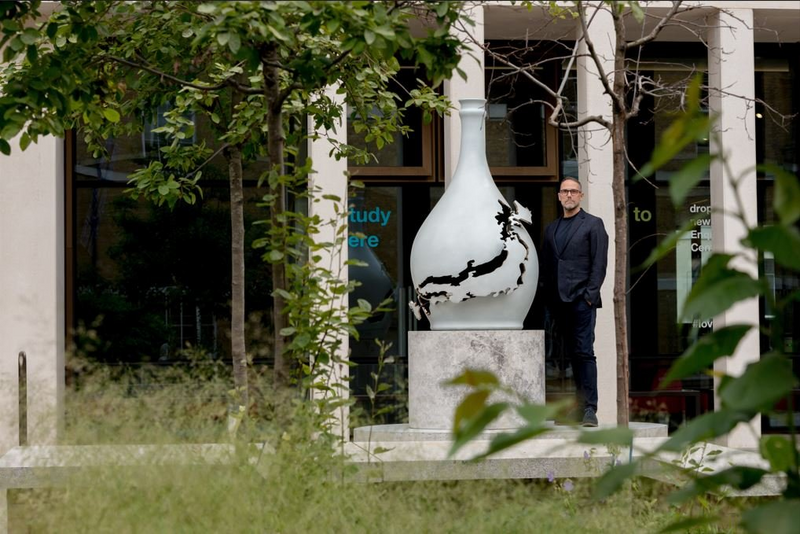
Your sculpture Fragments of Memory, situated in the Japanese Garden at UCL, while referencing Kintsugi through the gold edges, seems to take the practice even further. There are no attempts of repair; the trauma is not only celebrated but inflicted on the object. The reference to Kintsugi and the shape of a classic soy bottle quickly place it in the Japanese context. Could you talk a bit about the story behind the piece and what influenced it?
Fragments of memory is part of an arts program at UCL and are connected to the history of the university and what happens at the university. I decided to work on a piece for the ‘Japanese Garden’ on the Gower Street site and looked at two different connecting points between UCL and Japan. In the 1860s five students (the Chosen five) left Japan illegally to study at UCL during the turbulent end of the Tokugawa shogunate. One of these students became the first prime minister of the Meiji restoration and the other four also played an important role during this period. The second point was the collaborative research that is done between Japan and UCL on earthquakes. The work looks at fractures in society and in the land - reflecting the fragmented aspects of my work. The soy bottle refers to my work with ceramics and Japan’s ceramic tradition.
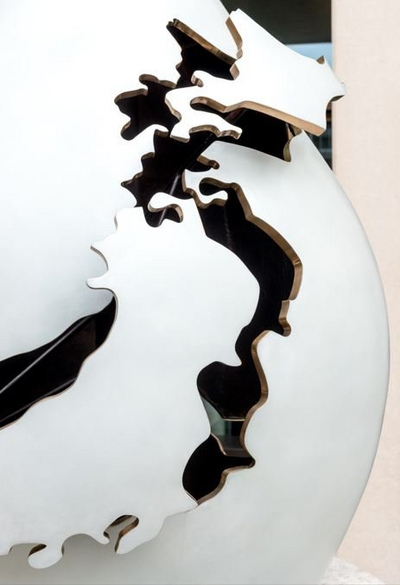
Being made from bronze, Fragments of Memory also differs from your usual process. How was it to work in a different material and actively collaborate on the piece with other makers, in the present, rather than those from the past?
The whole process was amazing, we worked with a wonderful team at Factum Arte in Madrid. While the Covid-19 pandemic made travelling during the work process impossible and everything had to be replaced with zoom meetings, I never had any concerns working with such a professional team.
In your other works, Memory Vessels, you enclose broken pieces of ceramics in their intact replicas made of glass. Could you talk a bit about the significance of the replication process and the choice of glass as a material?
While training to be a restorer I did an internship at the V&A, which included working on a glass Roman cinerary urn that would have contained ashes. Years later, I had the idea of making a glass funerary urn for a broken vase. When I find a great vase, broken but complete, I have an exact replica of it made in glass (like a memory of its original shape) and then arrange and fix the fragments inside.
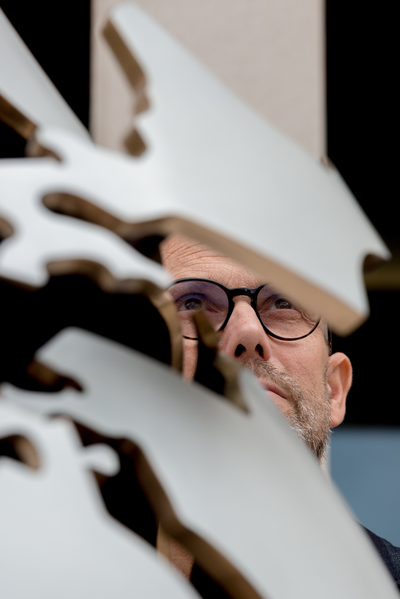
You have been drawing from and using motifs from your Dutch heritage but also the eastern traditions and practices. How did you come to draw inspiration from there - was it just through tracing the history of ceramics or were you generally interested in non-Eurocentric approaches? I guess looking eastwards brings an opportunity to question the western, capitalist notion of worth? Is that something that interests you?
I don’t think in terms of non-Eurocentric; I have always been open to any cultures. If I like something it doesn’t matter where it comes from. Having said that, China, Korea and Japan produced such vast quantities of ceramics that if you work with ceramics it is inevitable that these ceramics become part of your vocabulary. From my viewpoint as a restore, I have always been amazed how the market demands perfection and the desire for the damage to be invisible - something thought to be perfect is worth more. This is now also a trend in parts of the East, so I suppose that western aesthetics in this field are being adopted.
What are you working on at the moment?
Currently I’m working on an exhibition at the Legion of Honour Museum in San Francisco and an installation piece for a great London Museum, which I can’t mention yet.
Author: Ania Mokrzycka
Ania Mokrzycka is a London based independent curator and artist working across moving-image, sound, text, ceramics and performance. She is the co-founder of experimental curatorial platform Irruptive Chora. Initiated in 2018, the platform has engaged artists and different audiences in collective thinking and making through participatory performance events, workshops, exhibitions, reading groups and radio shows. So far, over 90 artists, researchers, curators and academics have taken part in its diverse programmes.
Published: August 2022
Cover picture: Portrait of Bouke de Vries with sculpture in the UCL Japanese garden ©Richard Stonehouse
